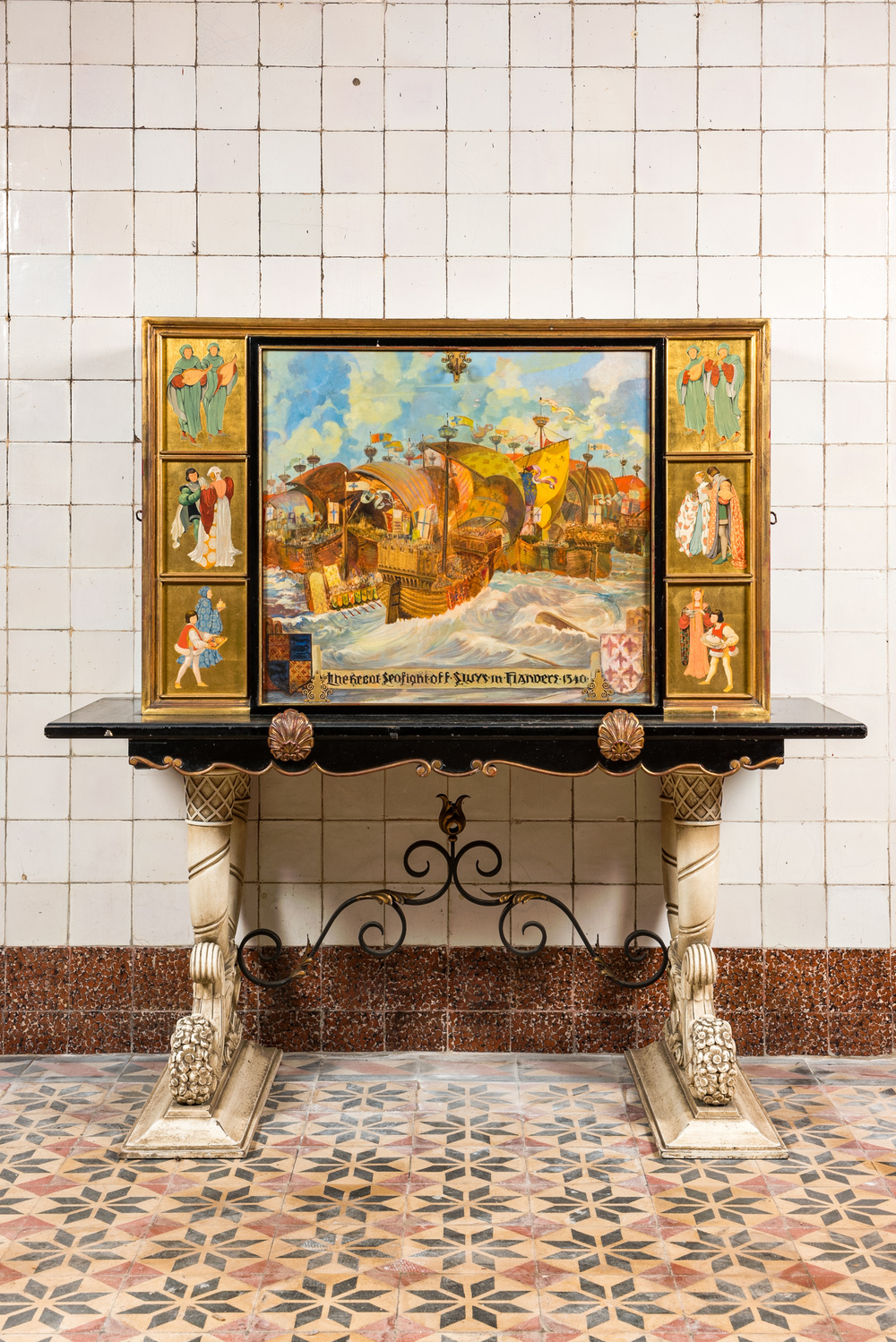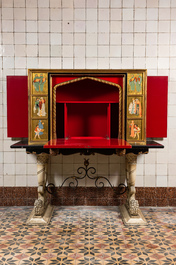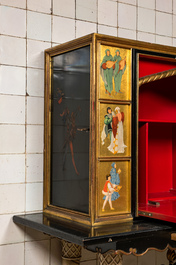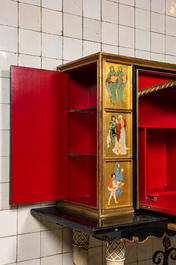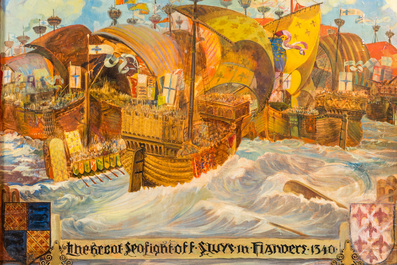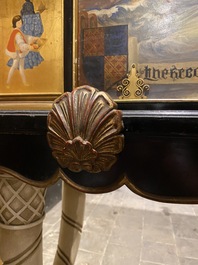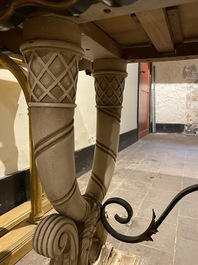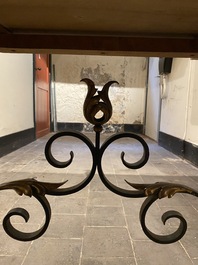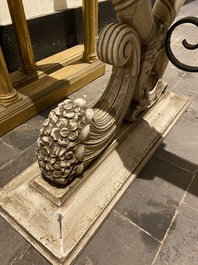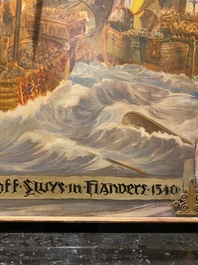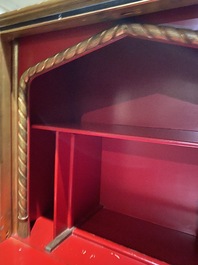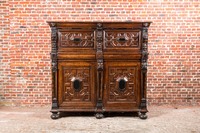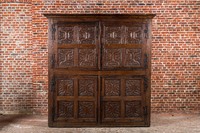We have to double-check your registration and make sure this is not an automated entry in our system. Please complete the test below...
A Gothic Revival cabinet on stand depicting the Battle of Sluys, 20th C.
H 150 x L 150 x D 56 cm
Provenance: Originally conceived as an exhbition piece made by the Decoene furniture factory in Kortrijk, to be exhibited in Antwerp.
The Battle of Sluys, also called the Battle of l'Écluse, was a naval battle fought on 24 June 1340 between England and France. It took place in the roadstead of the port of Sluys, on a since silted-up inlet between Zeeland and West Flanders. The English fleet of 120 - 150 ships was led by Edward III of England and the 230-strong French fleet by the Breton knight Hugues Quiéret, Admiral of France, and Nicolas Béhuchet, Constable of France. The battle was one of the opening engagements of the Hundred Years' War.
Edward sailed from the River Orwell on 22 June and encountered the French blocking his way to Sluys harbour. The French had bound their ships into three lines, forming large floating fighting platforms. The English fleet spent some time manoeuvring to gain the advantage of wind and tide. During this delay the French ships were driven to the east of their starting positions and became entangled with each other. Béhuchet and Quiéret ordered the ships to be separated and the fleet attempted to move back to the west, against the wind and the tide. While the French were in this disorganised state, the English attacked.
The English were able to manoeuvre against the French and defeat them in detail, capturing most of their ships. The French lost 16 to 20.000 men. The battle gave the English fleet naval supremacy in the English Channel. However, they were unable to take strategic advantage of this, and their success barely interrupted French raids on English territories and shipping. Operationally, the battle allowed the English army to land and to then besiege the French town of Tournai, albeit unsuccessfully.
